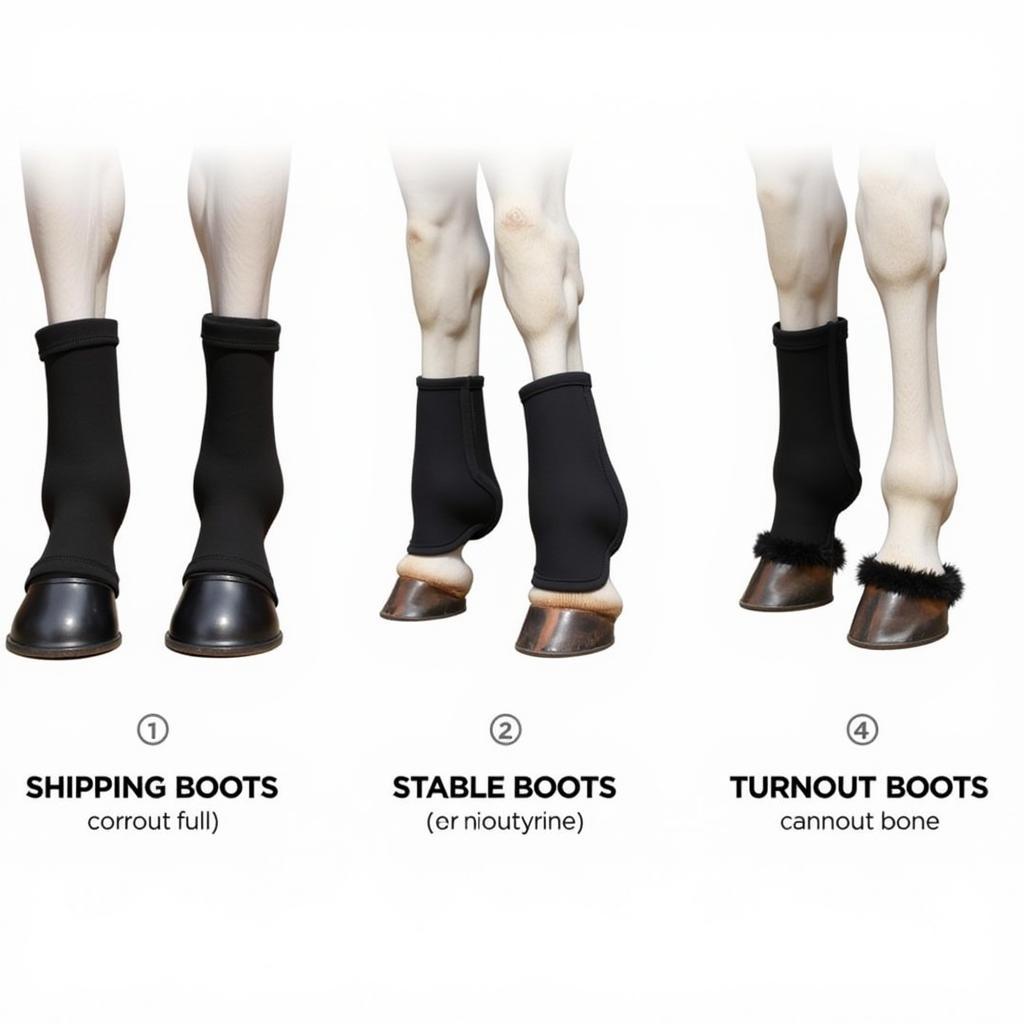Donut For Horse Leg, also known as a leg saver, is a padded support device used to protect a horse’s leg during various activities. It cushions the cannon bone, tendons, and ligaments, reducing the risk of injury from impact or overextension. These versatile devices offer a range of benefits for both performance and recovery, and understanding their use can significantly contribute to your horse’s well-being.
Understanding the Need for a Donut for Horse Leg
Horses, especially those involved in strenuous activities like jumping or racing, are prone to leg injuries. A donut for horse leg provides an extra layer of protection, minimizing the risk of bumps, bruises, and more severe injuries. They are often used during transport, turnout, or even during performance depending on the specific design and the horse’s needs.
Types of Donuts and Their Uses
There are various types of donuts available, each designed for a specific purpose. Some are designed for general protection during turnout, while others are more specialized for use during transport or recovery from injury. Understanding the differences is crucial for choosing the right donut for your horse.
- Shipping Boots/Travel Boots: These offer comprehensive protection during transport, encompassing the entire leg from hoof to knee/hock. They typically offer the thickest padding.
- Stable Boots: These are designed for use in the stall and often focus on supporting tendons and ligaments, aiding in injury recovery and preventing swelling.
- Turnout Boots or Bell Boots: While not strictly “donuts,” these boots offer similar protection during turnout, safeguarding the coronary band and heels from knocks and overreach injuries.
 Horse Leg Donut Types: Shipping, Stable, and Turnout
Horse Leg Donut Types: Shipping, Stable, and Turnout
Choosing the right type of donut requires considering your horse’s individual needs and the activity they will be engaging in. A lightweight donut might suffice for turnout, while a more robust option is necessary for shipping.
Proper Application of a Donut for Horse Leg
Correct application is essential for maximizing the effectiveness of the donut and preventing further injury. A poorly applied donut can restrict circulation, cause discomfort, or even slip and become a hazard.
- Ensure the leg is clean and dry.
- Position the donut around the cannon bone, ensuring even pressure.
- Secure the straps, making sure they are snug but not too tight.
- Check regularly for any signs of rubbing or discomfort.
“Ensuring the proper fit of a leg donut is paramount,” says Dr. Emily Carter, DVM, Equine Sports Medicine Specialist. “Too tight, and you risk circulation problems; too loose, and the donut can slip and become ineffective, even dangerous.”
Benefits of Using a Donut for Horse Leg
Beyond injury prevention, donuts can contribute to a horse’s overall leg health and comfort. They can provide support for horses with pre-existing conditions, reduce swelling, and even aid in recovery after strenuous exercise.
- Injury Prevention: The primary benefit is protecting the delicate structures of the lower leg from impact and overextension.
- Support and Stability: Donuts provide additional support to tendons and ligaments, particularly beneficial for horses with weakness or previous injuries.
- Swelling Reduction: Compression provided by certain types of donuts can help manage swelling and inflammation.
- Comfort during Transport: They offer cushioning and protection against bumps and jostling during travel.
When to Consult a Veterinarian
While donuts can be beneficial, they are not a substitute for professional veterinary care. If your horse sustains a serious injury or exhibits persistent lameness, consult your veterinarian immediately. They can diagnose the underlying issue and recommend the appropriate treatment plan.
“Don’t hesitate to reach out to your vet if you have any concerns about your horse’s leg health,” advises Dr. Sarah Miller, DVM, Certified Equine Rehabilitation Practitioner. “Early intervention is key to a successful recovery.”
Conclusion
A donut for horse leg can be a valuable tool for protecting your equine companion’s legs. By understanding the different types, proper application techniques, and potential benefits, you can make informed decisions about their use. Remember to consult with your veterinarian for any concerns regarding your horse’s leg health, ensuring they receive the best possible care. Choosing the right donut can significantly contribute to your horse’s overall well-being and performance.
FAQ
- How often should I check the donut for proper fit?
- Can I leave a donut on overnight?
- What are the signs of a poorly fitting donut?
- Are there different sizes of donuts for different sized horses?
- Can I use a donut on a horse with a pre-existing leg condition?
- How do I clean a horse leg donut?
- What materials are horse leg donuts made from?
For further assistance, please contact us at Phone Number: 0772127271, Email: [email protected] or visit us at QGM2+WX2, Vị Trung, Vị Thuỷ, Hậu Giang, Vietnam. We have a 24/7 customer service team.